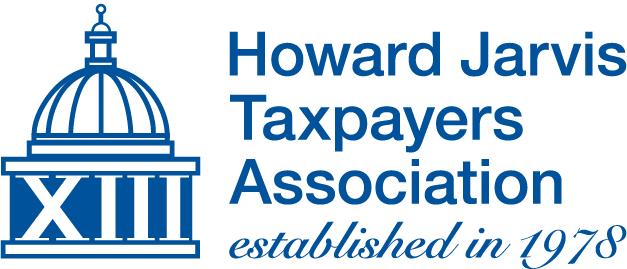WHAT LOOPHOLE?
One of the most commonly held misconceptions about Proposition 13 is that it has a “loophole.”
For example, California Teachers Association President E. Toby Boyd told the Capitol Weekly podcast in July that Proposition 15 on the November ballot, which would raise taxes on California businesses by requiring commercial and industrial properties to be reassessed to market value every three years, “reclaims” $12 billion per year “that corporate entities have utilized through a loophole in Proposition 13.”
There is no loophole in Proposition 13. It’s the law, written into the State Constitution, that all property is taxed at the same rate and under the same rules. That has been the case in California since the 1800s. Proposition 13 simply capped the annual increases in assessed value until there is a change of ownership, and cut the tax rate to 1 percent from its previous statewide average of 2.67 percent.
When Proposition 13 was on the June 1978 ballot, the state Legislature put a competing measure, Proposition 8, on the same ballot in the hope that voters would choose the weaker alternative. Proposition 8 would have created a split roll, dividing the assessors’ list of taxable properties into categories such as commercial and residential, and then allowing different tax rates to be applied. Voters rejected Proposition 8 and its split-roll proposal by a vote of 53–47 percent. Proposition 13 was approved with nearly 65 percent of the vote.
There was no misunderstanding, and there is no loophole.
Some have argued that legal maneuvers have allowed some business properties to evade reassessment to market value when there is a change of ownership. While this could be called a “loophole,” it’s not in Proposition 13. The definition of change of ownership was set in state law after Prop. 13 passed. All it takes to fix any problem with the definition is another state law, passed by a majority vote in the Legislature and signed by the governor. There is no need to amend the State Constitution.
This “fix” has been proposed multiple times by Sen. Patricia Bates, R-Laguna Niguel, with the support of the Howard Jarvis Taxpayers Association. It has been blocked every time by majority Democrats. It appears that they would rather have the “loophole” than the solution. This allows them to point to any legal maneuvers as a reason to repeal part or all of Proposition 13 itself.
A fix to the definition of change of ownership was included in a 2020 initiative sponsored by the California Association of Realtors. However, this measure was withdrawn after the Legislature passed a revised version to substitute on the ballot. One of the revisions to the initiative, which is now Proposition 19, removed the fix to the change of ownership definition.
Even as they leave the change of ownership definition unfixed, proponents of Proposition 19 contend that they are fixing a “loophole” by repealing the exclusion from reassessment of properties transferred between parents and children, except in cases where the children move into the home within a year.
Once again, that’s not a loophole, that’s the law. The parent-child transfer exclusion was added to the State Constitution by Proposition 58 in 1986. The measure stated that a home of any value, plus additional property with an assessed value of up to $1 million, could be transferred between parents and children without reassessment. Proposition 58 was put on the ballot by a unanimous vote of the Assembly and the state Senate, and it was approved by 75.7 percent of California voters.
That’s no loophole.
The fact is, property tax increases are limited in California because that is the will of the voters, expressed at the ballot box again and again.
The initiative process in California is an important reform that dates to the early 20th century. It provides a check on the power of elected officials and others who would like to raise taxes to the sky. They may try to fool the voters with tricky initiatives and false arguments, but HJTA is committed to making sure voters know the truth.
HJTA.org is your source for everything Proposition 13 and for information valuable to California taxpayers. For more information or to take action, go to HJTA.org/take-action.
Published by the Howard Jarvis Taxpayers Association (HJTA). Copyright © 2020 by Howard Jarvis Taxpayers Association. All rights reserved.


